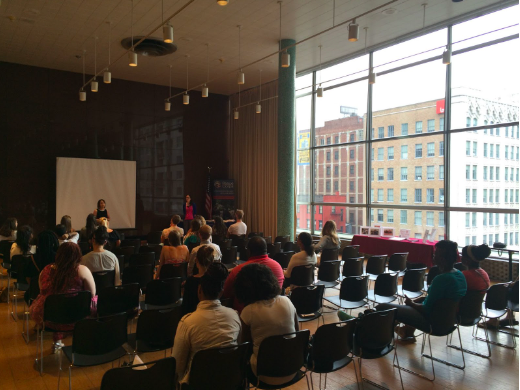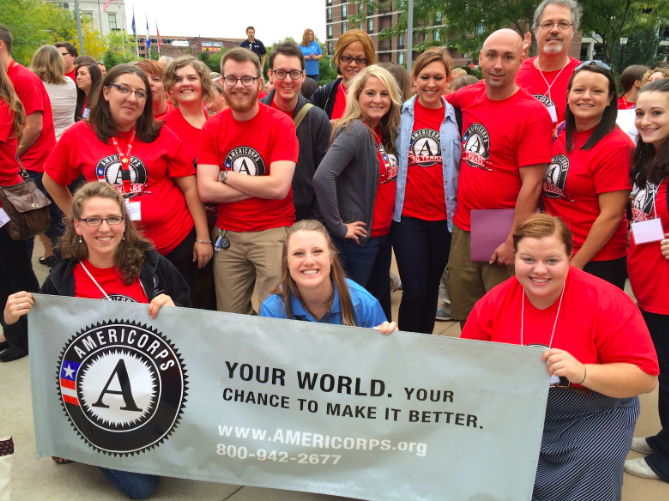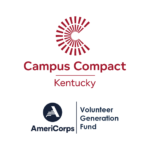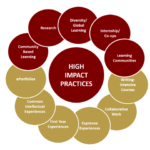Service Learning/Community-Based Learning(CBL) : 6 Best Practices
Evidence indicates that students engaged in high-impact practices (HIPs) experience elevated levels of learning success. These evidence-supported approaches include service learning, undergraduate research, internships, capstone courses/projects, collaborative assignments/projects, common intellectual experiences, diversity/global learning, ePortfolios, first-year seminars/experiences, learning communities, and writing-extensive courses (8).
Welcome to our blog, where we explore many of the different High Impact Practices. First, we will be discussing the compelling reasons why introducing service learning or community-based learning into your curriculum is a pivotal step toward creating a more engaged and empathetic generation. Many practices use the terms service learning and community-based learning interchangeably. This topic is of immense significance for educators, educational institutions, and the broader community, as it pertains to the holistic development of students and the betterment of society. In this post, we will delve into six impactful examples/practices of implementing community-based learning and why they are emblematic of its profound benefits. Community-based learning goes beyond traditional education. It empowers students as active change-makers, sparks ongoing action, challenges perspectives, and cultivates responsibility and purpose. A study through St. Elizabeth’s University on the impacts of student learning outcomes based on undergraduate community-based learning participation found that eighty-six percent of participating students reported that they would recommend service-learning to other students (6) Join us as we uncover the transformative power of community-based learning, and how it nurtures compassion, critical thinking, and a genuine commitment to making a positive difference in the world.
# Examples/Tips/Ideas/Resources for [service
learning/community-based learning practices]
1. Prepare yourself: Connect with your Community
Integrating community-based learning into a curriculum can be a powerful tool for both students and the communities they serve. However, it is essential to establish community partner connections before diving in. These connections foster a sense of belonging and purpose for students, enabling them to feel genuinely connected to the cause, issue, or problem they aim to address. Moreover, involving community partners from the beginning ensures that the community-based learning efforts are rooted in actual community needs, guaranteeing relevance and impact. By engaging partners early on, educators allow them to become familiar with the community-based learning process and align their expectations with the educational goals. Partners can become co-educators, offering invaluable insights and expertise that enrich the learning experience for students (7).
2. Prepare your students
Preparing students for community-based learning requires a thoughtful approach that fosters empathy, critical thinking, and practical skills. Begin by introducing the community partner and the communities’ needs, building an emotional connection. Offer lessons and sessions on cultural sensitivity and effective communication to ensure respectful interactions with diverse populations. Encourage students to reflect on their strengths and learning goals to personalize their community-based learning experiences. Simulate scenarios to develop problem-solving abilities. Also, emphasize the importance of humility and open-mindedness, guiding students to view themselves as learners alongside the community. By nurturing these qualities, students will be equipped to engage meaningfully and make a positive impact through community-based learning.
3. Align community-based learning to course learning outcomes
Choosing partners that align with the course learning outcomes is crucial. When partners share common goals, students can witness the practical application of their knowledge, making their learning more meaningful and tangible. This alignment ensures that the community-based learning project becomes a cohesive extension of the curriculum, reinforcing students’ academic development while addressing real-world challenges.
When developing your course, consider its suitability for community-based learning.
● Determine how community-based learning can enhance student learning in the course and identify assignments that could be accomplished through CBL opportunities.
● Look for community opportunities that allow students to apply course concepts while addressing community needs.
● Think about the time needed for each activity. Implementing a face-to-face discipline-based approach, where students engage with the community throughout the semester and reflect on their experiences using course content, is recommended (7). This ongoing engagement and reflection with community partners offer students a deeper community-based learning experience.
4. Collaborative Learning
Utilizing collaborative learning methods is essential to facilitate community-based learning in the classroom. These approaches encourage active participation, foster a shared sense of responsibility, and enhance critical thinking. Group activities establish effective communication channels for idea exchange, while discussions value the collective knowledge and input behind service initiatives. Feedback and assessment activities enable continuous improvement in project execution. Collaborative learning also provides spaces for idea generation through brainstorming, idea organization by comparing and analyzing differing perspectives, and intellectual convergence, where students reach understanding and consensus (2). Emphasizing collaborative learning not only enriches the CBL experiences but also cultivates vital skills like teamwork, empathy, and open-mindedness, preparing students for meaningful engagement in their communities as active and responsible citizens.
5. Practice Open Dialogue
Engaging in open dialogue is a pivotal aspect of supporting your students through community-based learning in the classroom, but it’s not without its challenges. For some students, facing differing perspectives on the world and the needs of their community can be daunting. That’s why practicing perspective taking is essential. Encouraging students to discuss the lives of community members in need helps them explore the similarities and differences between their own experiences and the realities of others (7). In this safe and respectful atmosphere, students should feel free to share their thoughts, ideas, and concerns openly. By embracing open dialogue, we can cultivate empathy and a deeper understanding of the community’s needs, allowing us to collaborate more effectively and create meaningful, impactful service initiatives
together.
6. Create Contextualized and Purposeful Reflection Assignments
The key to contextualized reflection is to ensure that the reflective activities resonate with the community being served and allow students to explore the significance and relevance of their service in that specific context. By creating opportunities for students to connect their experiences with the community’s realities, contextualized reflection enriches the learning process and strengthens the impact of service-learning/community- based learning initiatives. You should also encourage students to think deeply about their experiences, question assumptions, and analyze the broader implications of their service within reflections (3). Here are some examples of contextualized and critical reflection activities:
1. Journaling and Blogging: Encourage students to keep reflective journals or write blog posts about their service experiences. These reflections should be tailored to the community they served and should highlight the connections between their coursework /aligned actions and the community’s specific context and culture. The students’ contemplative insights offer them an enhanced opportunity for deeper comprehension of the materials and coursework.
2. Community-based Art and Expression: Engage students in artistic or creative expressions that are relevant to the community they serve. This could include creating murals, poetry, or performances inspired by the community’s history, culture, or challenges. Such activities encourage deep reflection while fostering a sense of connection and empathy.
3. Field Trips and Site Visits: Plan field trips or site visits to locations relevant to the service project. For instance, if students are working on an environmental conservation project, visiting the affected natural areas can offer a context-rich reflection experience, deepening their understanding of the issues at hand.
4. Critical Incident Analysis: Ask students to identify a specific incident or moment during their service experience that challenged their assumptions or beliefs on concepts discussed in class. Have them write a reflective essay or engage in group discussions to explore how that incident influenced their understanding of the community and the issues they are addressing.
5. Ethical Dilemma Reflection: Present students with ethical dilemmas related to their service project or community work. Guide them through discussions to weigh different perspectives and consider the ethical implications of their decisions and actions.
6. Future Action Planning: Encourage students to envision future steps and actions based on their service experience. Have them consider how they can continue to address the community’s needs, advocate for change, or contribute to ongoing efforts after the service-learning project concludes.
7. Problem-Solving Workshops: Organize problem-solving workshops where students work together to brainstorm solutions for challenges faced during the service project. Encourage them to consider innovative and sustainable approaches to address community needs.
Conclusion
In conclusion, preparing students for service learning/ community-based learning involves empathy-building workshops, critical thinking exercises, and scenario simulations to empower meaningful engagement. Aligning service-learning with course outcomes bridges theory and practice, making education more applicable to real-world situations. Collaborative learning fosters teamwork and essential skills, while open dialogue enriches the learning experience through diverse perspectives. Contextualized reflection assignments deepen connections with the community and foster social responsibility. Together, these key concepts empower students to learn course content more deeply and to make a positive impact in their communities. As educators, implementing these key concepts can create transformative service-learning experiences, preparing our students to be compassionate and proactive change agents in their communities and beyond. Let’s embark on this journey of growth and positive impact together, shaping a better future for ourselves and the world around us.
(1) 25, N., & 26, A. (2016, August 19). Six steps for successful service learning. Project Learning Tree. https://www.plt.org/educator-tips/6-steps-for-successful-service-learning/
(2) Barton, T. (2021, February 3). Classroom management strategies that facilitate service-learning in a Digital age. Serve Learn. https://servelearn.co/blog/classroom-management-strategies-that-facilitate-service-learning-in-adigital-age/
(3) Barton, T. (2020, August 19). 5 ways to integrate service-learning through an online learning approach. Serve Learn. https://servelearn.co/blog/5-ways-to-integrate-service-learning-through-an-online-learning-appro ach/
(4) Community-engaged learning and teaching knowledge hub. Campus Compact. (2022, February 23). https://compact.org/resources/community-engaged-learning-and-teaching-knowledge-hub?f%5 B0%5D=practice_area%3A197&f%255B0%255D%3Dpractice_area=197
(5) Game, P. (n.d.). The teacher’s guide to service learning [+ 5 examples]. Prodigy Education. https://www.prodigygame.com/main-en/blog/service-learning/
(6) Mason, M. R., & Dunens, E. (2018). Service-Learning as a Practical Introduction to Undergraduate Public Health: Benefits for Student Outcomes and Accreditation. Frontiers in Public Health, 7. https://doi.org/10.3389/fpubh.2019.00063
(7) Pawlowski, D. (2018). From the classroom to the community: Best practices in service-learning. Journal of Communication Pedagogy, 1(1), 85–92. https://doi.org/10.31446/jcp.2018.15
(8) #creator, & #identity. (2023, July 6). High-impact practices. AAC&U. https://www.aacu.org/trending-topics/high-impact




